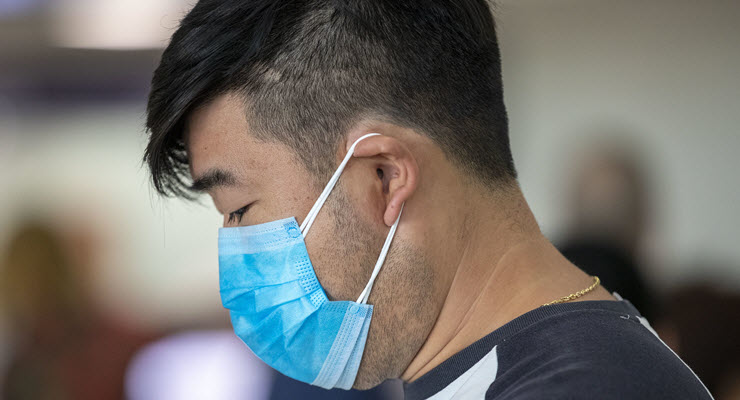
The countries best dealing with COVID-19 appear to be those who had first- hand, fatal experience experience with the SARS outbreak 17 years ago. What Hong Kong (which lost 299 citizens to SARS), Taiwan, South Korea and Singapore learned was simple: take quick and decisive action — and do what the government says.
By contrast, the unfolding disasters in Italy and the US have been case studies in bad management. The US, in particular, is burdened with the twin difficulties of one of the world’s most unequal health systems and arguably the world’s most incompetent administration.
The key element in preventing the rapid spread of the virus (other than locking everyone in their homes) is widespread testing. In this regard, Australia is an absolute disaster. Like the US, we have a critical shortage of test kits. Unless you’ve been overseas recently or have knowingly been in contact with a carrier, it’s actually extremely difficult to get tested.
Contrast this with South Korea, which quickly setup drive-through testing and tested 248,000 people in a matter of weeks. They are able to test around 15,000 per day. The test is free, it takes 10 minutes at most, and the results are usually texted to you the next day.
The rapid testing kit is not currently Australia but companies are reportedly attempting to import than and a spokeswoman for the Federal health department told the Guardian the idea had “merit”.
This widespread testing has also reduced the relative scale of the lockdown. While South Korea has a somewhat similar population to Italy, only 29,000 people are in self-quarantine.
World Health Organisation chief Tedros Adhanom Ghebreyesus, who has been ahead of the curve throughout the pandemic, has called for all suspected cases of COVID-19 to be tested. “You cannot fight a fire blindfolded,” he said. “Test, test, test. Test every suspected case.”
A second element in preventing the spread is constant symptom checking. In China, which is moving quickly towards relative normalcy after its six week lockdown, citizens are still subject to extensive temperature testing. Temperatures are regularly checked outside homes and subways and shopping centres.
Experts suggest that an early symptom of COVID-19 is a high temperate. In the absence of official test kits, regular temperature checking is essential.
Both measures are virtually non-existent in Australia.
The primary goal of health authorities in Australia (who, led by the Morrison government, appear to be completely failing in communication and response) isn’t financial stimulus. The goal is to stop the spread of the virus. For that, we need critical testing infrastructure and we need quick isolation.
Other countries have shown it’s possible, now we must follow their lead.








Whenever I pass my thermometer, I take my temperature. Now it’s 36.5 degrees Celsius. One hour ago it was 36.0 degrees. Am I developing COVID-19 infection?
I hope you’re just acting up silly & not serious Wayne …or else i’m going to be a real dill. Try 37.2 Cel before you even think about thinking about worrying ..and then if it continues ..go to the doc .. ave daily range …36-37 Cel. some 35.5-37
My usual first thing in the morning temperature is 35.7 degrees Celsius. So 36.5 degrees is elevated for me. Or is it? I usually don’t take my temperature so often. It’s now 36.4 degrees.
Fever is supposed to be the first sign of COVID-19 infection, but I haven’t seen an explanation of what it is.
I haven’t travelled internationally. But I have had distant exposure to a person with infection 10 days ago, who was sitting in the lower gallery of the Perth Concert Hall. I was sitting in the front stalls.
The communications regarding risk don’t seem adequate.
Given the advance notice we had of this virus and past experience from SARS ( a virus of the same family) , I am absolutely gob smacked at the lack of preparation ( eg test kits, masks, basic public advice advertising etc ) and the lack of consistently going in hard. Instead we seem to be following some theoretical curve fitting ideology.
As for communication – that has been appalling. It may make sense for “those in the know” but for us mere mortals we have been left to wander the internet in search of what makes sense to do.
No wonder there is panic in the supermarkets.
You can bet this will drag out longer than it needed to and have a greater impact than it needed to.
Bill – I agree re communication. I wonder how many people in 100 could describe to you what are “flu-like symptoms”. The message needs to be simple and clearly understandable to even the thickest of One Nation voters.
BTW, when will Nine Media do something about Alan Jones, who is one of their employees? Until they do, they are validating what Trump says about the media and fake news.
The lack of preparedness for and of testing has got to be a colossal fail by this government in handling this outbreak – that people who could well be carrying the virus are being turned away to roam at large and infect others.
My wife went to her doctor this morning (about something else) and she (the Dr) said the government’s handling and lack of testing capabilities is reprehensible.
Thank you Adam! At last someone in the media ‘gets it’!!
Yes EVERYONE who has most of the symptoms should be tested ASAP. I heard on talk-back ABC radio, one man who lined up for 6 hours at a testing facility, complete with ALL the symptoms, who was turned away because he probably only had the ‘flu!!! Diabolical…now the poor guy doesn’t know what to do, and is so worried about his family.
Just not good enough, Smoko!!!!
The incident described above happened in outer-suburban Melbourne.